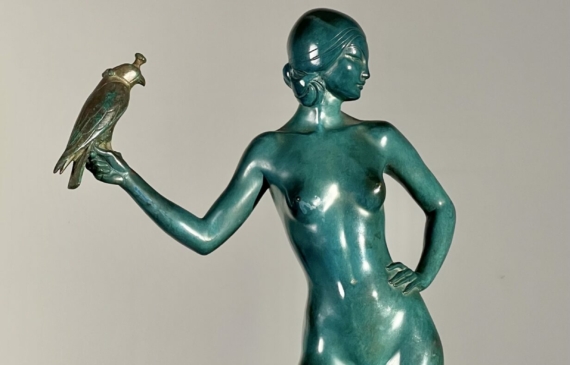
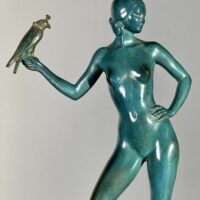

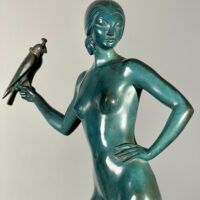

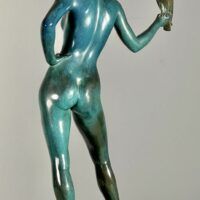


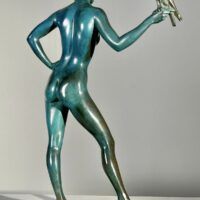
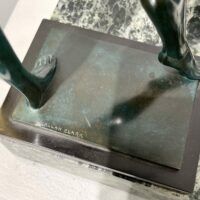
Allan Clark (American, 1896-1950)
Charmion, circa 1927
Bronze, teal green patina with parcel gilt
14 ⅛ H. x 8 ¼ W. x 3 ¾ D. inches
Overall height with period marble base: 14 ⅝ inches
Signed on base: ALLAN CLARK / No. 4 (edition)
Inscribed on base: ROMAN BRONZE WORKS N – Y –
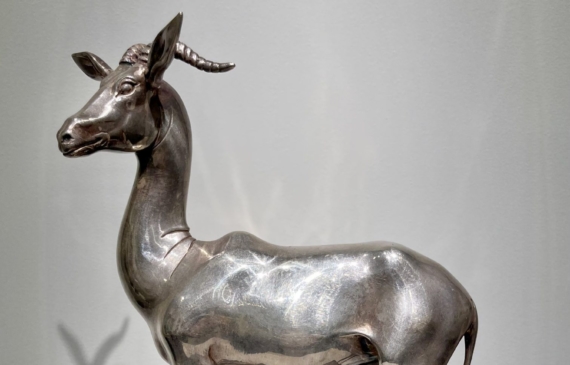
Allan Clark (American, 1896-1950)
Addra Gazelle, 1929
Bronze, silver plate
9 ½ H. x 7 ¼ W. x 2 ⅜ D. inches
Signed on base Allan Clark 1929
Mounted on period marble base
Allan Clark grew up in Tacoma, Washington, and showed an early aptitude for art, starting his formal training under a local painter by the age of 11. After completing high school, he enrolled at the Art Institute of Chicago where he studied under Albin Polasek, who sparked a love of sculpture in the young student that prompted him to turn away from painting. After serving in the Navy during World War I, Clark received a number of successful exhibitions and important commissions, leading to his admittance into the National Sculpture Society as one of its youngest members in 1919. The following year, he relocated to New York and began studying under Robert Aitken. In 1924, Clark embarked on a three year tour of the Far East, visiting and studying the arts in Japan, Korea, China, Cambodia, Thailand, and Burma, among other nations. Upon his return, the works he produced while traveling were exhibited at Harvard’s Fogg Art Museum, making Clark the first living artist to receive a solo exhibition at the museum. He settled in New Mexico in 1929 and established a studio there, where he would produce Southwestern works and integrate himself into the Santa Fe arts community.